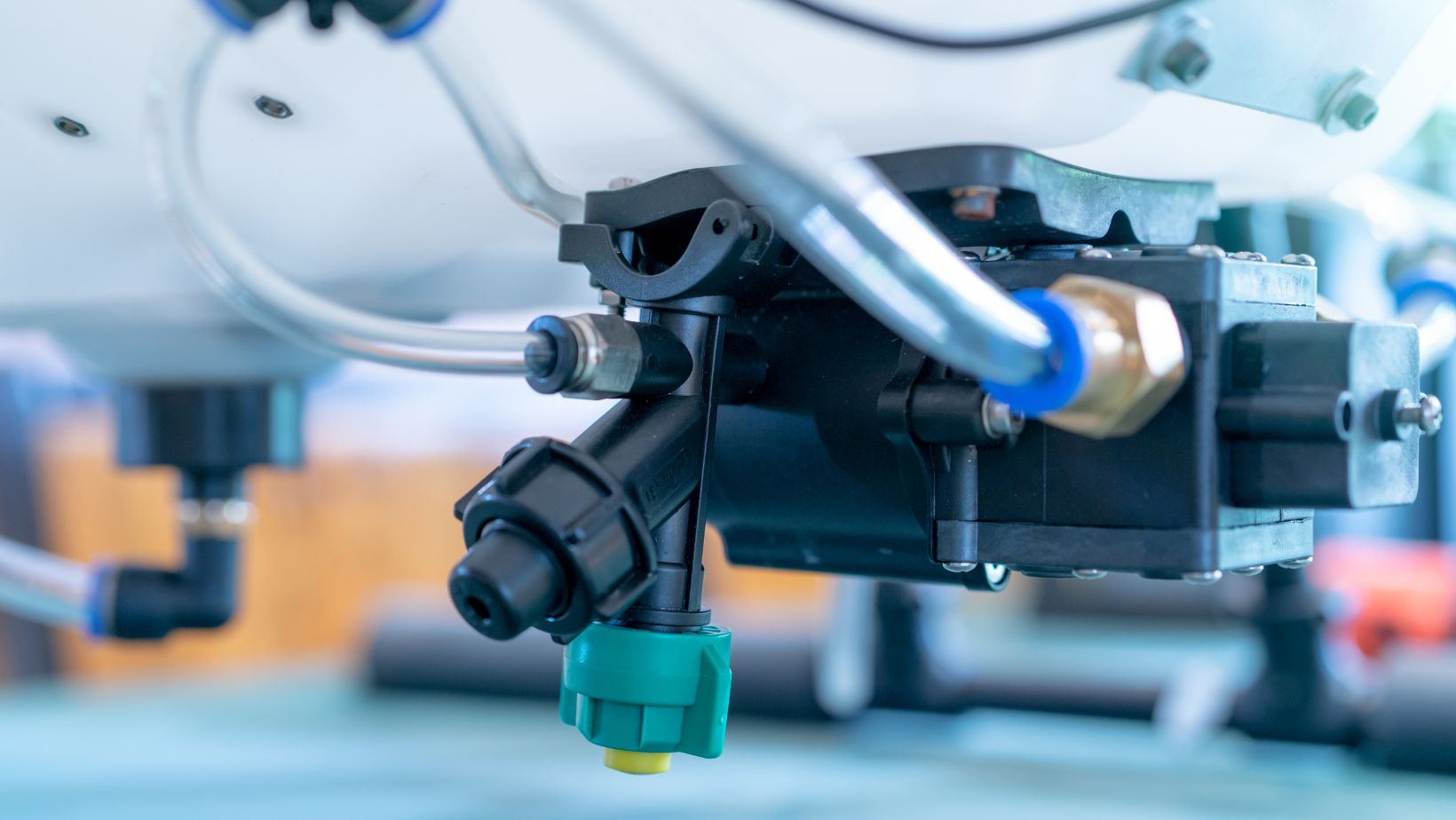
The Evolution of Cobots: From Basic Machines to Smart Assistants
Remember when robots were confined to cages on factory floors, separated from human workers for safety reasons? The robotics world has dramatically shifted with the rise of collaborative robots—or cobots—designed specifically to work alongside humans rather than replace them.
You’ll discover how a cobot evolved from clunky, limited machines to sophisticated partners in modern workplaces. We’ll explore their journey from academic concepts in the 1990s to today’s versatile assistants in manufacturing, healthcare, new retail, and beyond. You’ll learn how sensors, artificial intelligence (AI), and intuitive programming advancements have transformed these machines into valuable teammates that enhance human capabilities rather than threaten jobs.
History of Cobots and Basic Automation
Cobots first appeared in the late 1990s as a response to traditional industrial robots’ limitations. In 1996, General Motors developed the initial cobot concept in collaboration with Northwestern University. These early models lacked autonomous movement capabilities and required direct human guidance.
Cobots evolved from simple machines to advanced assistants in the early 2000s. Companies like Universal Robots introduced the UR5 in 2008, creating the first commercially viable cobot to work safely alongside humans without protective barriers.
By 2010-2015, cobots gained traction across manufacturing floors. These machines featured improved force-sensing technology that automatically stopped movement upon detecting unexpected contact. Unlike their industrial robot predecessors, who required isolation in cages, cobots are integrated directly into human workspaces.
The defining characteristic of these early cobots was their focus on collaboration rather than replacement. They supplemented human capabilities by handling repetitive or ergonomically challenging tasks while humans managed more complex operations requiring judgment and dexterity.
DOBOT’s Role in the Evolution of Cobots
DOBOT has significantly advanced cobot technology by developing versatile robotics solutions that bridge the gap between industrial needs and human collaboration. Their cobots feature precision control systems that allow for sub-millimeter accuracy while maintaining complete safety for human coworkers.
The DOBOT MG400 exemplifies this progress with its lightweight design (8 kg) and impressive 440 mm reach. This desktop-grade cobot handles payloads up to 750g with ±0.05 mm repeatability, making it perfect for small parts assembly and inspection tasks.
For more demanding applications, the DOBOT CRA series of cobots carries payloads between 3 and 20 kg while preserving safety protocols that enable barrier-free human-robot collaboration. These models include advanced collision detection that stops operation within 0.03 seconds of unexpected contact.
DOBOT’s contribution to cobot evolution extends beyond hardware specifications. Their intuitive programming interfaces reduce setup time from days to hours, allowing workers without technical backgrounds to program complex routines through simple demonstrations and graphical interfaces.
This accessibility has expanded cobot adoption in small and medium businesses previously unable to invest in traditional industrial automation.
Technical Advances in DOBOT Cobots
DOBOT cobots have evolved remarkably, incorporating cutting-edge technologies to enhance collaboration between humans and robots. These advancements focus on three core areas: safety, precision, and user-friendly programming.
Safety Technologies and Smart Assistance
DOBOT cobots feature advanced sensor arrays including Time-of-Flight sensors, LiDAR, and ultrasonic detection systems for real-time environment monitoring. These sensors create protective fields around the cobot, allowing it to detect human presence and adjust operations accordingly. In case of a sudden power failure, the robot activates its electromagnetic brake in just 18 ms, maintaining its position within 1 mm deviation to prevent any potential damage to equipment or products.. The latest models integrate natural language processing capabilities, enabling operators to give verbal commands for simple task adjustments without stopping production processes.
Precision and Performance
DOBOT cobots deliver exceptional accuracy with positioning deviations less than 0.1mm across their full range of motion. This precision comes from:
- Magnetic weaving is used in the cross-border region
- Real-time motion compensation algorithms
- Dynamic payload adaptation without sacrificing precision
The CRA series maintains this accuracy even while handling loads up to 20kg, making these cobots suitable for delicate electronics assembly and heavier component positioning tasks.
Ease of Programming and Integration
DOBOT cobots reduce programming time by 75% compared to traditional industrial robots. The intuitive teach pendant interface enables programming through:
- Drag-and-drop visual block programming
- Hand-guiding for motion path creation
- Pre-configured task templates for common operations
Open API architecture allows seamless integration with existing manufacturing systems, databases, and IoT networks. The cobots connect to standard industrial protocols, including Modbus, Profinet, and Ethernet/IP, without requiring specialized hardware bridges, reducing implementation costs and timeline by approximately 40%.
Applications and Industry Impact
Since their introduction, cobots have transformed numerous sectors, creating new opportunities for human-robot collaboration. Their versatility and safety features have enabled applications impossible with traditional industrial robots.
Industrial Applications
Food processing facilities use cobots for packaging, palletizing, and quality control in environments where traditional robots were impractical due to safety concerns.
Non-Industrial and Creative Applications
Research laboratories use cobots to handle hazardous materials and perform repetitive testing procedures with consistent precision.
In retail environments, cobots now help with inventory management and customer service. They can scan shelves to identify out-of-stock items and guide customers to product locations.
Creative industries have embraced cobots for filmmaking, where they execute precise camera movements for complex shots. Artists also collaborate with cobots to create sculptures and paintings, programming them to apply specific brush strokes or carving techniques while maintaining human artistic direction.
Future Trends and the Evolution Toward Smart Assistance
With each technological advancement, cobots are transforming into more intelligent assistants. Modern cobots integrate machine learning algorithms to adapt to changing production environments without constant reprogramming. These systems learn from human demonstrations, reducing setup time by up to 85% compared to traditional programming methods.
The integration of advanced vision systems has dramatically expanded cobot capabilities. When equipped with optional 3D cameras and infrared sensors, today’s cobots can identify objects with 99.8% accuracy even in variable lighting conditions. This enables applications like bin picking from mixed containers, a task previously too complex for automation.
Connectivity represents another major evolution path. IoT-enabled cobots now communicate with other machines, inventory systems, and enterprise software. A manufacturing floor cobot can automatically adjust its operations based on real-time production data, material availability, or quality metrics from upstream processes.
- Cloud-based fleet management – Coordinating multiple cobots across different locations through centralized dashboards
- Human-cobot gesture recognition – Reading hand signals to understand worker intentions
- Digital twin simulation – Creating virtual replicas for testing before physical deployment
- Mobile cobot platforms – Adding autonomous movement to extend workspace reach
Conclusion
Cobots have transformed from simple programmable constraint machines in the 1990s to sophisticated collaborative partners in modern workplaces. The journey began at Northwestern University through professors Colgate and Peshkin’s pioneering work for General Motors, addressing ergonomic challenges in manufacturing environments. Their first patent filing in 1999 laid the foundation for a revolutionary technology.
Today’s cobots feature advanced sensors, AI capabilities, and user-friendly interfaces, making them accessible even to small businesses. Companies like DOBOT have pushed boundaries with models offering sub-millimeter precision and intuitive programming that requires 75% less setup time than traditional robots.
The impact spans beyond manufacturing into healthcare, retail, and creative industries, proving that cobots aren’t replacing humans but complementing their skills. With machine learning algorithms reducing reprogramming needs by 85% and vision systems achieving 99.8% accuracy in complex tasks, cobots continue to evolve as valuable workplace allies.









